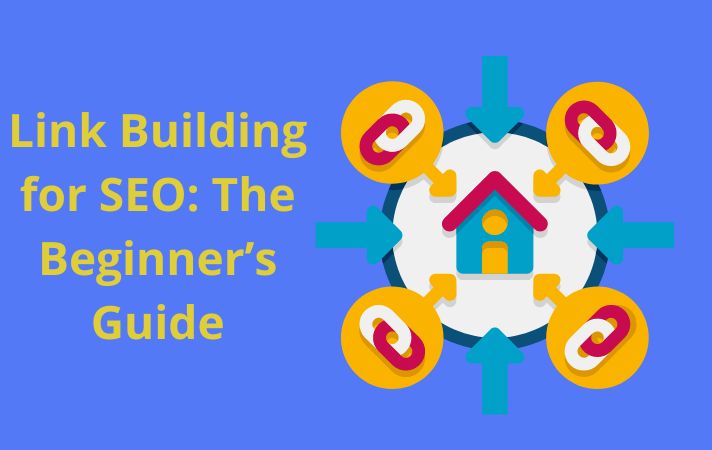SEO Tips for Beginners to Boost Your Search Engine Rankings provides guidance for people who are new to Search Engine Optimization (SEO) and want to improve their website’s ranking on search engines. Here are the main Tips:
Understand your target audience and the keywords they use.
Optimize your website structure, including URL structure and internal linking.
Ensure your website is mobile-friendly and has fast loading times.
Use descriptive and unique title tags and meta descriptions for each page.
Write high-quality, relevant content that includes target keywords.
Optimize images by using alt tags and compressing their file size.
Use header tags to structure your content.
Make sure your website is secure (HTTPS).
Build backlinks to your website from other reputable websites.
Use social media to promote your content and engage with your audience.
Monitor your website’s performance using tools such as Google Analytics and Google Search Console.
The article also includes additional tips and resources for beginners to improve their SEO, such as using tools to find long-tail keywords, monitoring website speed, and creating a sitemap for search engines. Overall, the article emphasizes the importance of creating a high-quality website that meets the needs of both search engines and users.
Target Relevant Primary and Secondary Keywords
Targeting relevant primary and secondary keywords is an important aspect of Search Engine Optimization (SEO) that can help improve the visibility and ranking of your website on search engine results pages (SERPs). Here are some tips for identifying and targeting primary and secondary keywords:
Understand your target audience: Knowing your target audience and their search habits can help you identify the primary and secondary keywords that are most relevant to them.
Conduct keyword research: Use keyword research tools like Google Keyword Planner, SEMrush, or Ahrefs to identify relevant primary and secondary keywords. Look for keywords that have high search volume and low competition.
Choose primary and secondary keywords: Your primary keyword should be the main keyword that summarizes the content of your page, while secondary keywords are related keywords that support your primary keyword. Use your primary keyword in your page’s title tag, meta description, URL, and throughout your content, while using secondary keywords throughout your content.
Use long-tail keywords: Long-tail keywords are more specific and targeted phrases that have lower search volume but are less competitive. Use long-tail keywords to help your content rank higher for niche topics and improve the relevancy of your content for specific search queries.
Avoid keyword stuffing: While it’s important to use primary and secondary keywords in your content, it’s important to avoid overusing them to the point of keyword stuffing. This can negatively impact your website’s ranking and user experience.
By targeting relevant primary and secondary keywords, you can help improve the visibility and ranking of your website on search engine results pages, making it easier for your target audience to find your content.
Use a Mix of Internal and External Links
Linking is an essential component of effective SEO. Internal links are links within your website that connect pages to each other, while external links are links from your website to other websites. Using a mix of both internal and external links can have a positive impact on your website’s search engine rankings and can help provide a better user experience. Here are some tips for using a mix of internal and external links on your website.
Use internal links to improve website structure
Internal linking is an important factor in building a logical website structure. By linking pages within your website, you can help search engines better understand your content and improve the user experience by making it easier to navigate your website. Ensure that your internal links are relevant, descriptive, and located in a natural position within the content.
Use external links to build credibility
External links are an important factor in building website credibility. By linking to high-quality external websites, you can show search engines that you are providing valuable and relevant content to your audience. Be sure to link to reputable websites and sources, and ensure that the content you link to is relevant to your own content.
Use a mix of do-follow and no-follow links
Do-follow links are links that pass link juice and authority from one website to another, while no-follow links do not. A mix of do-follow and no-follow links can help maintain a natural-looking link profile and avoid penalties from search engines. Ensure that do-follow links are relevant and helpful to the user, and that no-follow links are used to link to affiliate websites, sponsored content, or other non-relevant content.
Avoid keyword stuffing
Avoid keyword stuffing in your links, as this can harm your website’s search engine rankings. Instead, use natural and descriptive anchor text that clearly describes the content you are linking to. This can help improve the user experience and avoid penalties from search engines.
Monitor your link profile
Monitoring your link profile is an important part of effective SEO. Use tools like Ahrefs, SEMrush, or Google Search Console to monitor your link profile and identify any broken or toxic links. Remove any low-quality or irrelevant links, and disavow any toxic links that are harming your website’s search engine rankings.
In conclusion, using a mix of internal and external links can have a positive impact on your website’s search engine rankings and can help provide a better user experience. Ensure that your internal links are relevant and located in a natural position within the content, and that your external links are high-quality and relevant to your own content. Use a mix of do-follow and no-follow links, avoid keyword stuffing, and monitor your link profile to ensure that your website is in compliance with search engine guidelines.
Remove Anything That Loads Slowly
Website speed is a critical factor in providing a good user experience. A slow-loading website can frustrate users and lead to higher bounce rates, which can hurt your search engine rankings. To ensure that your website is running at peak performance, it’s important to remove anything that loads slowly. Here are some tips for identifying and removing slow-loading elements from your website.
Identify slow-loading elements
The first step in removing slow-loading elements from your website is to identify them. There are several tools you can use to identify slow-loading elements, including Google PageSpeed Insights, Pingdom, and GTmetrix. These tools can provide a detailed report of your website’s performance, including any elements that are causing slow load times.
Optimize images
Images can be a major culprit of slow-loading websites. To optimize images for faster load times, compress them using a tool like Photoshop or a free online tool like TinyPNG or Kraken.io. Additionally, use appropriate image sizes and formats to reduce file size without sacrificing image quality. You can also use lazy loading to delay the loading of images until they are needed, which can significantly reduce initial load times.
Minimize JavaScript and CSS
JavaScript and CSS files can also cause slow load times, especially if they are large or contain unnecessary code. To minimize these files, use a tool like Minify or Gulp to remove any unnecessary code and compress the remaining code. Additionally, you can use asynchronous loading to delay the loading of these files until they are needed, which can improve initial load times.
Remove unnecessary plugins and scripts
Plugins and scripts can also contribute to slow load times, especially if they are outdated or unnecessary. Review your website’s plugins and scripts and remove any that are no longer needed or are slowing down your website. Additionally, ensure that all plugins and scripts are up-to-date and compatible with your website’s platform and other plugins.
Use a content delivery network (CDN)
A content delivery network (CDN) can significantly improve website speed by caching content and delivering it from a server located closer to the user. A CDN can also help reduce server load and bandwidth usage. Consider using a CDN to improve website speed, especially if your website has a global audience.
In summary, removing anything that loads slowly can help improve your website’s speed and provide a better user experience. By identifying slow-loading elements, optimizing images, minimizing JavaScript and CSS, removing unnecessary plugins and scripts, and using a content delivery network (CDN), you can significantly improve website speed and reduce load times. Remember, a faster website can lead to higher engagement, lower bounce rates, and better search engine rankings.
Generate Backlinks from High Site Authority Websites
Generating backlinks from high site authority websites can be a powerful way to improve your website’s search engine rankings and increase your online visibility. A backlink is a link from another website to your website, and when high authority websites link to your site, it can signal to search engines that your content is valuable and trustworthy. In this blog, we’ll explore how to generate backlinks from high site authority websites.
Create high-quality content
The first step in generating backlinks from high authority websites is to create high-quality content that other websites will want to link to. This means creating content that is useful, informative, and engaging for your target audience. Your content should be original, well-written, and offer something of value to your readers.
Conduct outreach
Once you have created high-quality content, the next step is to conduct outreach to other websites and bloggers in your industry. Reach out to websites that are relevant to your content and offer to contribute a guest post, infographic, or other type of content that includes a link back to your website. Be sure to personalize your outreach messages and offer value to the website or blogger you are reaching out to.
Use broken link building
Broken link building is a strategy that involves finding broken links on other websites and offering a replacement link to your content. This strategy can be effective because you are offering a solution to a problem that the website owner may not even know they have. Use a tool like Ahrefs or SEMrush to find broken links on high authority websites and offer your content as a replacement.
Participate in online communities
Participating in online communities, such as forums and social media groups, can be a great way to connect with other website owners and bloggers in your industry. By sharing your content and engaging with other members of the community, you can build relationships and potentially generate backlinks to your website.
Leverage public relations
Leverage public relations to generate backlinks from high authority websites. This can involve pitching your content to journalists or bloggers who cover your industry, or participating in interviews or podcasts that are relevant to your content. By building relationships with journalists and bloggers, you can increase the likelihood of your content being featured on high authority websites.
In conclusion, generating backlinks from high authority websites can be a powerful way to improve your website’s search engine rankings and increase your online visibility. By creating high-quality content, conducting outreach, using broken link building, participating in online communities, and leveraging public relations, you can build relationships and generate backlinks from websites that are relevant to your content. Remember to focus on creating valuable content that meets the needs of your audience, and the backlinks will follow.
Use Short, Descriptive URLs
Short, descriptive URLs can make a big difference in improving your website’s search engine optimization (SEO) and user experience. URLs, or website addresses, help search engines and users understand the content of your web pages. By following these tips for creating short, descriptive URLs, you can improve your website’s visibility in search engine results pages (SERPs) and make it easier for users to find the information they’re looking for.
Keep it short and simple
Shorter URLs are better for both search engines and users. They are easier to read, remember, and share. Keep your URL as short and simple as possible by avoiding unnecessary words, numbers, and special characters. Try to limit your URL to no more than 60 characters.
Use your target keyword
Include your target keyword in your URL to give search engines and users a better idea of what your page is about. Use your primary keyword near the beginning of your URL for maximum impact. However, avoid stuffing your URL with too many keywords, which can make it look spammy and hurt your SEO.
Be descriptive
Make sure your URL is descriptive and accurately reflects the content of your web page. Use simple, descriptive words that convey the main topic of your page. For example, if you have a page about digital marketing, your URL could be www.example.com/digital-marketing-tips.
Use hyphens to separate words
Use hyphens (-) to separate words in your URL, rather than underscores or spaces. This helps search engines understand the different words in your URL and makes it easier for users to read. For example, use www.example.com/social-media-marketing instead of www.example.com/social_media_marketing or www.example.com/social media marketing.
Avoid using special characters
Avoid using special characters, such as #, @, !, $, and %, in your URL. Special characters can cause problems for search engines and may not display correctly in web browsers or on social media platforms. Stick to simple, alphanumeric characters and hyphens.
In summary, short, descriptive URLs can help improve your website’s search engine optimization and user experience. By keeping your URLs short and simple, using your target keyword, being descriptive, using hyphens to separate words, and avoiding special characters, you can create URLs that are easy to read, remember, and share. Remember, the more user-friendly your website is, the more likely it is that users will stay on your site and engage with your content, which can ultimately help improve your SEO rankings.
Optimize Your Page Title and Meta Description
Optimizing your page title and meta description is a crucial part of on-page search engine optimization (SEO). These elements provide search engines with important information about the content of your web page, and can influence how your page is displayed in search results. In this blog, we’ll explore how to optimize your page title and meta description to improve your search engine visibility and drive more traffic to your website.
Keep Your Title Tag Under 60 Characters
Your page title, also known as the title tag, is the main headline that appears in search engine results pages (SERPs). It’s important to keep your title tag under 60 characters to ensure that it’s fully visible in search results. Include your primary keyword in your title tag and make it descriptive and compelling to encourage searchers to click through to your website.
Use Your Target Keyword
Including your target keyword in your page title and meta description is essential for improving your page’s visibility in search results. Use your target keyword at the beginning of your title tag and in the first sentence of your meta description. Make sure that your keyword usage feels natural and isn’t forced.
Make Your Meta Description Compelling
Your meta description is the short summary that appears below your page title in search results. It should be compelling and accurately describe the content of your page. Use action-oriented language and include a call-to-action (CTA) to encourage searchers to click through to your website. Keep your meta description under 155 characters to ensure that it’s fully visible in search results.
Use Unique Descriptions for Each Page
It’s important to use unique page titles and meta descriptions for each page on your website. This helps search engines to understand the content of each page and improves your chances of ranking for a wider range of search terms. Avoid using duplicate titles and descriptions across multiple pages, as this can confuse search engines and negatively impact your search engine rankings.
Use Structured Data Markup
Structured data markup, also known as schema markup, is a way to provide search engines with additional information about the content of your page. It helps search engines to understand the context of your content and can improve your chances of ranking for featured snippets and other rich search results. Use structured data markup to highlight important information, such as reviews, ratings, and event information.
In conclusion, optimizing your page title and meta description is a crucial part of on-page SEO. By keeping your title tag under 60 characters, using your target keyword, making your meta description compelling, using unique descriptions for each page, and using structured data markup, you can improve your search engine visibility and drive more traffic to your website. Remember to focus on creating high-quality, valuable content that meets the needs of your audience, and the search engine optimization will follow.
Format Your Content for Search Engines & Target Featured Snippets
As the internet continues to grow and evolve, it’s becoming increasingly important to ensure that your content is easily discoverable by search engines. One way to do this is by formatting your content in a way that’s optimized for search engine algorithms. Additionally, optimizing your content for featured snippets can help to increase your visibility and drive more traffic to your site. In this blog, we’ll explore how to format your content for search engines and target featured snippets.
Use Relevant Keywords
The first step in formatting your content for search engines is to use relevant keywords throughout your content. This doesn’t mean stuffing your content with as many keywords as possible; instead, it means using them in a way that feels natural and makes sense within the context of your content. Use tools like Google Keyword Planner to research relevant keywords and phrases that your audience is searching for, and incorporate them into your content in a way that feels organic.
Use Headings and Subheadings
Using headings and subheadings in your content is an excellent way to make it more easily digestible for both search engines and readers. Headings and subheadings not only help to break up your content into more manageable chunks, but they also provide context to search engines about the topics that your content covers. Use H1 tags for your main headings, and H2 and H3 tags for your subheadings.
Write Concise and Descriptive Meta Titles and Descriptions
The meta title and description are the first things that people see when they come across your content in search results. They’re also used by search engines to understand what your content is about. Make sure that your meta title and description are concise and descriptive, and that they accurately reflect the content of your page. Use relevant keywords in your meta title and description to improve your chances of ranking for specific search terms.
Include Images and Videos
Using images and videos in your content not only makes it more engaging for readers, but it also provides an opportunity to include relevant alt text and metadata that can help your content rank better in search results. Make sure that your images and videos are high quality and relevant to the content of your page. Additionally, make sure to include alt text that accurately describes the content of the image or video.
Target Featured Snippets
Featured snippets are the brief, concise summaries that appear at the top of search results for certain queries. By optimizing your content for featured snippets, you can increase your visibility and drive more traffic to your site. To optimize your content for featured snippets, use concise, bullet-pointed lists and make sure that your content answers a specific question or query. Additionally, using tables, graphs, and other visual aids can increase your chances of being featured in a snippet.
In conclusion, formatting your content for search engines and targeting featured snippets can help to increase your visibility and drive more traffic to your site. By using relevant keywords, headings and subheadings, concise meta titles and descriptions, images and videos, and targeting featured snippets, you can make your content more easily discoverable and valuable to both search engines and readers. Remember to prioritize creating high-quality, valuable content that meets the needs of your audience, and the search engine optimization will follow.
Quality Original Content
In today’s digital age, content is king. With the vast amount of information available at our fingertips, it’s more important than ever to create high-quality, original content that stands out from the noise. Whether you’re a blogger, marketer, or business owner, creating quality original content should be a top priority. In this blog, we’ll explore what quality original content is, why it’s important, and how to create it.
What is Quality Original Content?
Quality original content is content that is unique, informative, engaging, and adds value to the reader. It’s not just about creating content for the sake of it; it’s about creating content that resonates with your target audience and meets their needs. Quality original content is also free from plagiarism and has a distinct voice that reflects the brand or individual creating it.
Why is Quality Original Content Important?
Quality original content is essential for a few reasons. Firstly, it helps to establish authority and build trust with your audience. If you consistently provide valuable information and insights, your audience will see you as an expert in your field and will be more likely to return to your site or content in the future. Secondly, it can help to improve your search engine rankings. Google and other search engines value original content and will reward sites that provide it with higher rankings in search results. Finally, quality original content can help to generate leads and increase conversions. By creating content that speaks to your target audience’s needs, you can establish a relationship with them that can eventually lead to a sale or conversion.
How to Create Quality Original Content
Creating quality original content is easier said than done. Here are some tips to help you create content that stands out:
Understand your audience: Before you start creating content, it’s essential to understand your target audience. What are their pain points? What kind of content do they enjoy consuming? What questions do they have? By understanding your audience, you can create content that resonates with them and adds value.
Research your topic: To create quality original content, you need to have a deep understanding of your topic. Conduct research on the subject and try to find unique angles or insights that haven’t been covered before.
Write with a unique voice: Your content should have a distinct voice that reflects your brand or individual personality. This helps to make your content memorable and engaging.
Use visuals: Visuals can help to break up your content and make it more engaging. Use high-quality images, infographics, and videos to illustrate your points.
Edit and proofread: Once you’ve written your content, be sure to edit and proofread it thoroughly. This helps to ensure that your content is error-free and easy to read.
In conclusion, creating quality original content is essential for anyone looking to establish themselves as an authority in their field. By understanding your audience, researching your topic, writing with a unique voice, using visuals, and editing and proofreading your content, you can create content that resonates with your target audience and adds value. With time and effort, you can build a library of content that not only helps to establish your authority but also generates leads and increases conversions.













